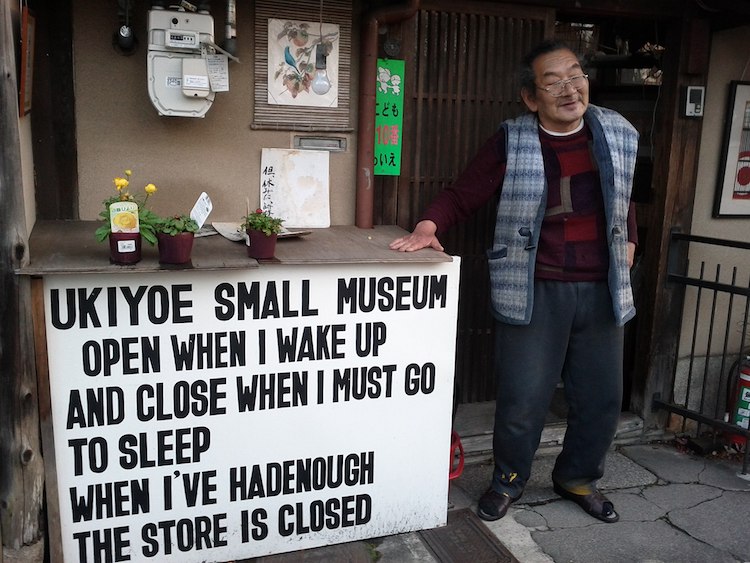In Kyoto, there is a small museum with a sign that anyone in the workforce can probably appreciate. Called the Ukiyoe Small Museum, it’s owned by artist Ichimura Mamoru and its hours are flexible, to say the least.
Outside of the museum’s front door is a straightforward and charming sign that says, in no uncertain terms, “Open when I wake up and close when I must go to sleep. When I’ve had enough the store is closed.” It was originally written in Japanese but translated into English by a tourist in 2003; it’s since gained international acclaim.
Getting into the Ukiyoe Small Museum is a gamble, but those who are able to visit find the experience to be delightful. Inside, there are woodblock prints created by Mamoru in the traditional ukiyo-e style, a genre that was originally produced from the 17th through the 19th century in Japan. It’s known as “pictures of the floating world” and depicts scenes of everyday life during that time in rich color palettes and flat compositions. (For more on this iconic art, check out our guide to ukiyo-e woodblock prints.)
The ukiyo-e genre faded in popularity during the 20th century, but artists like Mamoru have kept the tradition alive. He learned it from his grandfather as a teenager and has made it his life’s work to continue producing these types of prints; he’s one of 50 or so ukiyo-e artists left in Japan. Stepping into the museum is an intimate look at his studio and the time-honored process of how these prints are made.
Located in Kyoto, Japan is the Ukiyoe Small Museum.

Photo: Thornet [CC BY-SA 2.0], via Wikimedia Commons
Part artist studio, part museum, it’s run by Ichimura Mamoru who opens it when he likes and closes it when pleases.
Those lucky enough to enter get an intimate look at Mamoru’s work and the process of making a traditional ukiyo-e woodblock print.
h/t: [Amusing Planet]
Related Articles:
Contemporary Woodblock Prints Reimagine David Bowie as Mystical Japanese Legends
220,000+ Japanese Woodblock Prints Available Online in Growing Database
How to Make Your Own Woodblock Print Like the Japanese Masters
